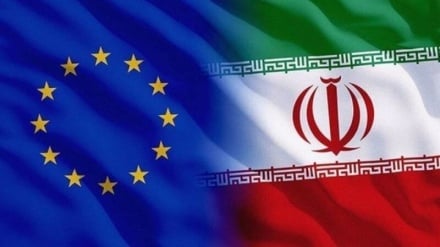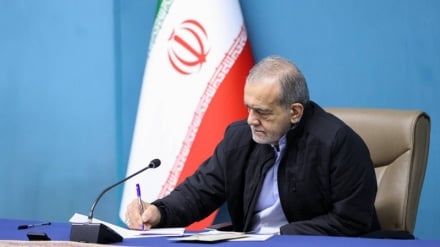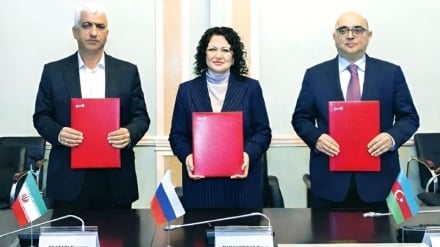Farsi language, great and lasting
The famous magazine Culture has just released a report wherein Farsi language is introduced among the 10 ancient languages which continue to be spoken with myriads of speakers. We have prepared a special program in this regard.
Farsi has been named by the Culture magazine as an ancient language with multitudes of speakers. The other 9 languages named by this magazine are Tamil, Lithuanian, Icelandic, Hebrew, Macedonian, Basque, Finnish, Georgian and Irish. In the prelude of the report it is said that the development of language is like the biological development. It occurs very carefully and from generation to generation. Thus, there is no distinct point between a language and the next language which is shaped after it. As a result, it is impossible to say that one language is older than the other one for all of them are as old as human being. The report points that Farsi language, due to the spread of its speakers in Iran, Afghanistan and Tajikistan and the roughly little changes it has undergone through centuries, is distinguished among the other languages of this group. The report adds that today Farsi speakers can take a text from 900 years ago and read it with much less difficulty than an English speaker who reads Shakespeare.
Iranians have preserved the sweet Farsi language for centuries like a precious jewel. They have further sweetened and beautified it but the essence of the language has remained intact. The epithet “sweet” has been used for Farsi as of old times. It denotes expressiveness, smoothness, musicality and softness. This has been mentioned in the Manichean, Avestan, Pahlavi and Parthian texts, too. Since old times, Iranians and specialists of Iranian studies have referred to Farsi as a sweet language. The sweet Farsi language has gone through thousands of years till it has reached us in its current form.
Farsi language belongs to a major family of languages known as Indo-European. Moreover, due to the commonalties between Farsi and most of the languages of Subcontinent, this language belongs to the Indo-Iranian branch of the Indo-European family.
During the previous millennia and the era of relocation, Indians headed toward Hindu Kush Mountains and Iranians settled in what is called Iran. It was here that the group of Iranian languages was formed. These languages spread in a vast area. In the east it stretched to Transoxiana, the banks of the rivers Oxus (Amu Darya) and Jaxartes (Syr Darya); in the north it covered the Greater Khorasan, Kharazm, Caucasus and coasts of the Caspian Sea; in the west it included Mesopotamia and in the south it extended to the banks of Persian Gulf and Gulf of Oman.
Presently, the realm of the Iranian languages includes Central Asia, Trans-Caucasus, Afghanistan and other countries of west Asia.
According to linguists, Iranian languages are cognates which have been derived from the “Mother” language or Proto-Indo-European. The same origin, homogeneity of the basic vocabulary and the fundamentals of their grammar and structure is the guide to the kinship of these languages. Thus, the criterion for attributing various languages to the Iranian group is not the geographical borders of Iran but the international criteria of linguistics. On this basis, the Ossetian language with some speakers in Caucasus, the Yaghnabi (Neo-Sogdian) language spoken in the Yaghnab valleys of Tajikistan and Pashtu language of Afghanistan are all included in the Iranian languages according to the modern linguistics.
Three periods have been delineated for Farsi language. The first period, called as the old period, begins from the time when the first traces of the Iranian languages have been discovered till late Achaemenian era. The two languages of Old Farsi (Persian) and Avestan belong to this period. The scripts of Achaemenian period are in Old Farsi while Avesta, the religious book of the Zoroastrians, is in Avestan language.
The languages of this period, like many other ancient languages, have complicated grammar. The nouns are used in 7 or 8 moods and the verbs have intricate conjugations. The gender in these languages consists of male female and sometimes neutral. And the number comprises singular, dual and plural.
The second or middle period of the Iranian languages starts from the late Achaemenian era and continues till the early Islamic era. The languages of this period are divided in the eastern and western groups due to the linguistic and geographical rules. Among the eastern languages one can refer to Sogdian, Kharazmi, Scythian and Balkhi; while Parthian (Ashkanid Pahlavi) and the Sassanid Pahlavi (Southern Pahlavi) can be mentioned among the western languages. There are valuable works remaining from these languages such as: translations and commentaries of Avesta, philosophical and religious books like Bondaheshn, selections of Zadesparam, Pahlavi narrations and Shikand-gumanic Vichar.
The Iranian languages went through major developments in this period. The audio system of the language became very simple; the conjugation of nouns, adjectives and pronouns ceased to exist; the moods of verbs were much simpler and gender and duality were omitted. This ushered in the start of the third or new period of the Iranian languages. This way the sweet Farsi was born to be the language of poetry, culture, knowledge, religion, love and mysticism.
In terms of syntax and spelling Farsi enjoys unique features which have drawn the attention of linguists. The simple pronunciation of letters, mellifluous words and expressions, simple grammar and the power of making new words are some of these features. This language, owing to its agglutinative structure, can make myriads of words with adding prefixes and suffixes.
But the mystery of this language’s being lasting is not confined to structure and grammar, etc. It is the Iranian thought complemented with the Islamic thought behind it which has made it lasting, dynamic and sweet. Since the old centuries the songs of Avesta can be felt and understood in the texts of the book. During the Sassanid era our language indicated a rich and well-cultivated culture. The sciences and philosophies of Greek and India, too, further enriched our language and culture via communications of the scholars. The literature of the Sassanid era, which was compiled in the early Islamic centuries, is also very rich. The encyclopedic books called, “Dinkard” or “Dinkart” have remained form those days. Complicated religious and philosophical topics have been mentioned in these books. A survey of the vocabulary of these books reveals the high capability and power of Farsi language. The book, Shikand-gumanic Vichar meaning “The report which gives the last argument” puts the reader in face of firm and rational philosophical literature among religions so much so that the reader is amazed at the power of language at that time. In the book Yadegar Zariran the language is epic since it speaks of valour and epic deeds. The book Derakht-e Asurik contains a sweet debate between date palm and a goat and the book Khosrow Vardig is an account of the beauties of flowers, perfumes, games, clothes and foods.
Towards the end of the Sassanid era and the beginning of the Islamic era, Farsi is so rich a language that when it faces a new and strong phenomenon like the Arabic language it is not obliterated or absorbed in the new language though it adopts the Arabic words consciously and puts them in its own framework. Hence, today Iranians are not unfamiliar with the Farsi of those days despite the lapse of 1400 years. This language became the identity of Iranians as the Samanid ruler Yaghub Leis said, “Praise me with the language which is my language.”
Thus, the Samanid rulers placed Farsi speaking and Farsi writing as the principles of their rule. Therefore, it was in this era that the translation of holy Qur’an started hence further enriching the treasure of Farsi vocabulary. This way the grounds were prepared for emergence of Ferdowsi’s magnum opus, Shahnameh, which has been one of the documents of the Iranians’ identity. As Ferdowsi once said:
Thirty long years did I strive
With this did I Persian revive.
RM/SS


